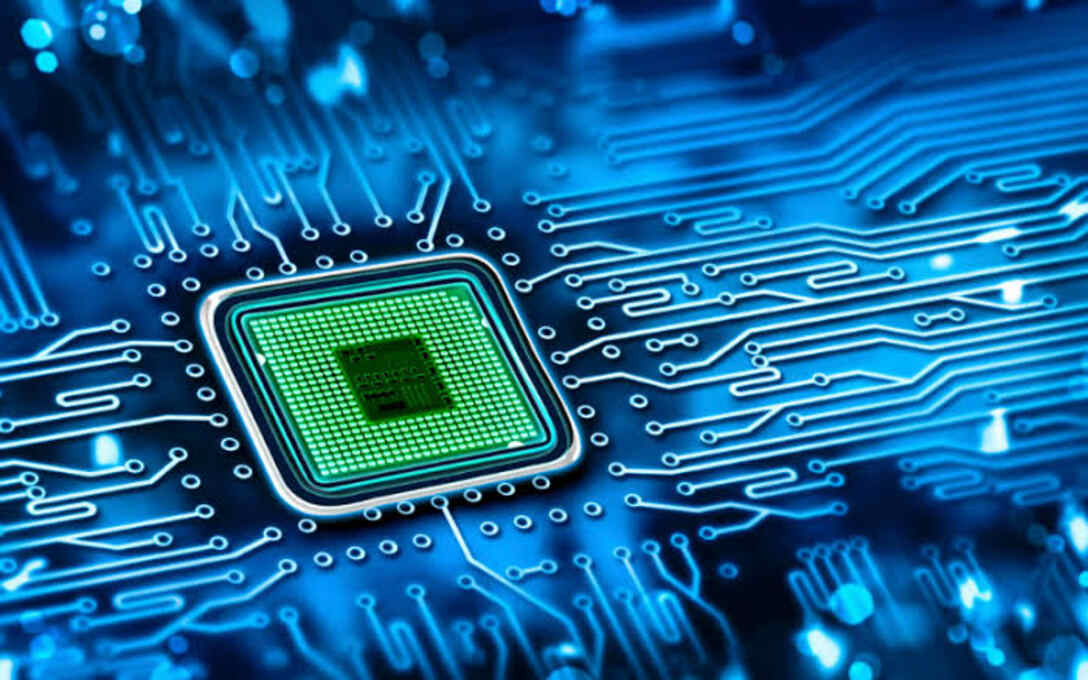
India Set to Produce First ‘Made in India’ Semiconductor Chip by 2025: A Leap Towards Self-Reliance
India’s ambitions to become a global electronics manufacturing hub have received a major boost! Union Minister Shri Ashwini Vaishnaw recently announced that the first ‘Made in India’ semiconductor chip is expected to be ready for production by 2025. This landmark achievement signals a significant step towards self-reliance in a critical technology sector and underscores the government’s commitment to fostering innovation and growth within the country.
The announcement was made during the second day of the ‘Global Investors Summit 2025’ held in Bhopal, Madhya Pradesh. Shri Vaishnaw, addressing the summit via video conferencing, congratulated the HLBS family on the inauguration of their new plant, timed auspiciously with the celebration of Mahashivratri. This new facility will play a crucial role in the expanding electronics manufacturing landscape of Madhya Pradesh.
Madhya Pradesh: An Emerging Electronics Manufacturing Hub
Shri Vaishnaw emphasized the vital roles played by Prime Minister Shri Narendra Modi and Madhya Pradesh Chief Minister Shri Mohan Yadav in driving this progress. Under Prime Minister Modi’s leadership, Madhya Pradesh has witnessed remarkable growth in the electronics manufacturing sector.
Key Highlights for Madhya Pradesh:
-
Two Approved Electronics Manufacturing Clusters: The Prime Minister has approved the establishment of two electronic manufacturing clusters, one in Bhopal and another in Jabalpur. These clusters will provide a focused ecosystem for companies involved in electronics production.
-
Active Participation: Currently, 85 companies are actively contributing to the electronics manufacturing sector within the state. This represents a significant success for both the state and central governments, demonstrating the attractiveness of Madhya Pradesh as an investment destination.
-
Future Skills Program: The government is dedicated to developing a skilled workforce. To this end, a program to train 20,000 engineers in Madhya Pradesh under the Future Skills Program has been announced. This initiative will ensure that the state has a talent pool ready to meet the demands of the rapidly evolving electronics industry.
India’s Booming Electronics Manufacturing Sector: A Decade of Unprecedented Growth
Over the past decade, the electronics manufacturing sector in India has experienced explosive growth, reaching a valuation of Rs. 10 lakh crore. This impressive expansion reflects the country’s growing capabilities and its increasing importance in the global electronics market.
Key Export Figures:
-
Total Electronics Exports: India is currently exporting electronics worth Rs. 5 lakh crore, demonstrating its growing presence in the global market.
-
Mobile Manufacturing Powerhouse: Mobile phones constitute a significant portion of these exports, accounting for Rs. 4 lakh crore.
-
Diversified Product Portfolio: Other key export items include laptops, servers, telecom equipment (₹75,000 crore), and defense & medical electronics, showcasing a diversified and increasingly sophisticated manufacturing base.
-
Top Export Category: Electronics has emerged as one of India’s top three export items, highlighting its strategic importance to the national economy.
Strengthening Semiconductor Manufacturing: The Foundation of the Digital Age
Semiconductors are the building blocks of modern electronics, and India is making rapid strides in establishing its own domestic manufacturing capabilities.
Key Developments:
-
Five Units Under Construction: India currently has five semiconductor manufacturing units under construction simultaneously. This ambitious undertaking will significantly reduce the country’s reliance on imports and bolster its technological independence.
-
‘Made in India’ Chip by 2025: As previously mentioned, the first ‘Made in India’ chip is expected to be rolled out by 2025, marking a historic milestone for the nation.
-
Investing in Talent: Recognizing the importance of a skilled workforce, the government has initiated a program to train 85,000 engineers in advanced semiconductor and electronics manufacturing. This initiative will ensure that India has the human capital necessary to sustain its growth in this critical sector.
Shri Vaishnaw credited Prime Minister Narendra Modi’s vision and leadership for propelling India’s electronics manufacturing industry to new heights. He also congratulated Chief Minister Shri Mohan Yadav and the people of Madhya Pradesh on their remarkable achievements.
HLBS’s New IT Campus: A Hub for Innovation and Production
The newly inaugurated IT campus, belonging to HLBS, spans an impressive 1 lakh square feet and is equipped with state-of-the-art facilities. This integrated facility will enable the manufacturing of IT hardware and electronic products under one roof.
Production Capabilities:
The plant will produce a wide range of products, including:
-
Servers
-
Desktops
-
Motherboards
-
Chassis
-
RAM
-
SSDs
-
Drones
-
Robots
-
Other end-to-end electronic components
Investment and Job Creation:
Over the next six years, the campus will see an investment of approximately Rs. 150 crores and generate employment for nearly 1,200 professionals. This significant investment will contribute to the economic growth of the region and provide valuable job opportunities for skilled workers. The facility will also manufacture desktop computers, all-in-one workstations, laptops, tablets, and monitors.
Indian Railways and Madhya Pradesh Government Collaboration
On the first day of the Global Investors Summit, the Union Minister announced significant investments in Madhya Pradesh. The Indian Railways and the Madhya Pradesh government signed agreements on renewable energy projects, further strengthening their partnership.
India’s Vision for Viksit Bharat 2047
The Modi government is strongly focusing on infrastructure and capacity building. To achieve the vision of Viksit Bharat 2047, the government is prioritizing four key areas across all sectors:
-
Infrastructure investment
-
Inclusive growth
-
Manufacturing expansion
-
Simplification of laws
What is HLBS?
HLBS is a technology company with a manufacturing unit in Bhopal and an upcoming state-of-the-art manufacturing and R&D facility in Bhopal IT Park. It focuses on developing innovative and high-tech products to serve both domestic and global markets. HLBS aims to provide cost-effective solutions to enhance the affordability of electronic products, especially for the common people. Committed to quality and reliability, HLBS ensures that every product meets the highest standards. The company is recognized and trusted across India for its technological advancements and contributions to the electronics sector.
Conclusion: A Promising Future for Indian Electronics
The developments highlighted in this announcement paint a promising picture for the future of electronics manufacturing in India. With strong government support, strategic investments, and a growing pool of skilled talent, India is well-positioned to become a major player in the global electronics market. The ‘Made in India’ semiconductor chip will be more than just a technological achievement; it will be a symbol of India’s growing self-reliance and its ambition to lead in the digital age. For Your Facts readers, this means more innovation, more jobs, and a stronger Indian economy in the years to come! This move aligns perfectly with the broader “Make in India” initiative, further solidifying the nation’s position on the world stage.




